
Egypt 2003: Pyramids at Giza
The "Pyramids" are situated on the desert plateau which marks the boundary of the vast urban complex of Giza (pronounced with a hard "g"), which is in fact a suburb of Cairo. Today there is a tendency to refer to the "Pyramids of Giza" even though the Egyptian name for the site is ElAhram ("the Pyramids"), a name which was also used by Western visitors prior to the meteoric rise of the village of Giza. Although the site extends beyond the plateau of Giza and despite the fact that there are many other pyramids in the Libyan Desert (in an area extending from Abu Rawash in the north to Lisht in the south), the exclusivity of the name is justified by the sheer magnificence of these three pyramids, which have been renowned since classical antiquity and even from the time of the Ancient Egyptians. The pyramids are in fact the tombs of three 4th-Dynasty pharaohs: Khufu (Cheops in Greek), Khafre (Chephren) and Menkaure (Mycerinus).
The Egyptian pyramids, from the Pyramid of Khufu (an unrivaled architectural masterpiece) to the more modest pyramids belonging to less powerful or less ambitious pharaohs, were tombs reserved for the pharaohs of the Old Kingdom (3rd-6th Dynasties) and part of the Middle Kingdom (11th & 12th Dynasties) and their queens. They are the principal element of a large architectural complex which, in addition to the actual pyramid, consisted of a funerary or "upper" temple, a small pyramid or "annex" (of religious or symbolic significance), and a causeway leading to a valley or "lower" temple which stood at the foot of the plateau, on the edge of the desert, and was linked to the Nile by a dock and a canal. The perfect and to some extent elementary design of the Pyramids of Giza in particular was the product of a long process which took place over several centuries incorporating various stages of development: superposed mastabas and the so-called "step" pyramids. The form of the monument also has several levels of symbolic significance. The pyramid was in fact the means by which the dead pharaoh rose to the firmament and joined the sun, far from the shadows of the tomb. It was also seen as an emanation of this heavenly body, the mineral concretization of the sun's rays. These are only two interpretations from an entire spectrum of symbolic images that the Ancient Egyptians associated with the pyramid. In spite of the many remaining obscurities (a situation which is not helped by the lack of any pre-5th Dynasty inscriptions in these sometimes gigantic monuments), there is still sufficient information to identify the occupants of the pyramids, even though most traces of them and their funeral paraphernalia have long since disappeared from the monuments they commissioned.
The Pyramid of Khufu is 755 feet square at its base, was originally 482 feet high (it lost 33 feet when the apex was removed) and has a total superposed volume (assuming it were solid) of about 88 million cubic feet. According to tradition the entrance was on the north side and the corridors were aligned with the circumpolar stars ever present on the horizon to ensure immortality. The present entrance, lower than the original entrance, is linked by a passageway to the "real" access corridor. There is "nothing to see" in the pyramid apart from the pyramid itself, whose interior construction and remarkable atmosphere (although the stale air can sometimes be tiring) make it a true architectural masterpiece.
The so-called "Solar Barque" is preserved in an unprepossessing building, on the south side of the pyramid, above the 100-foot boat pit in which it was discovered, completely dismantled, in 1954. It took several years to restore the 140-foot, cedar-wood barque to its original elegance, complete with cabin and long oars. All the elements are joined with ropes and pegs, with not a nail in sight. The significance of such grandiose vessels is still the subject of much discussion. They may have actually been used, in particular for the king's funeral, or they may have been a representation of the Night- and Day-Barques of the Sun: a promise of immortality or at least of resurrection. Near the Pyramid of Khufu are two other monuments which, although they cannot be visited and are relatively unattractive, form part of the history of the site.
Although the pyramid of Khafre (Chephren) is not quite as big (originally over 470 feet high, today over 446 feet) as his father's, it is nonetheless a striking sight with its white "cap" at the apex, the remains of the dazzling limestone casing which once completely covered the pyramids of both Khufu and Khafre. The interior is less complicated but just as impressive as that of Khufu. The Pyramid of Khafre, however, is renowned not so much just for itself but for the entire pyramidal complex: the partly preserved ascending causeway (descending if you approach it from the pyramid) and, lower down, at the entrance to the valley (where there is now a Sound and Light Auditorium), the impressive and extremely well-preserved valley or "lower" temple. Abu Hol, the Great Sphinx, which has become indissociably linked with the Pyramids, is also a "must" for all visitors to Egypt.
The Sphinx of Giza was undoubtedly carved out of a rocky spur which suggested its shape. Although it has long been the victim of erosion, and damage from upsurges of underground water, it has been cleared of sand and restored several times since antiquity, and remains one of the undisputed wonders of a civilization renowned for its architectural achievements. This colossus of Khafre (240 feet long and 65 feet high) is both the guardian and symbol of royalty. Other meanings have been attributed to it over the ages. During the New Kingdom it was seen as a representation of Re-Harakhti, the falcon-headed sun god, or Horem-Akhet (Horns on the Horizon, Harmachis in Greek), whom everyone came to worship and entreat. Young princes raised in Memphis came here either to meditate upon the concept of power or in search of legitimacy. Legend has it that the future Thutmose IV built a stele between the feet of the Sphinx following a dream that he had there in which the god Harmachis asked him to clear away the sand from his feet in return for his royalty. During the New Kingdom the Sphinx was also seen as a representation of the Syro-Canaanite god Hurun: an illustration of the ambient cosmopolitanism and the cultural and religious parallels of the period.
The Pyramid of Menkaure (Mycerinus), which is much smaller than the other two, is beautifully constructed, distinguished by its red granite lower courses and extremely well-preserved underground chambers. An enormous stone sarcophagus that was found inside the pyramid and sent to England in the 19th century was unfortunately lost when the ship transporting it sank off the coast of Spain. Visitors leaving Menkaure are reminded of the semi-legendary tradition that the pyramid was built by Nitocris, the queen of the last of the 6th-Dynasty pharaohs (who is sometimes confused with the Saite courtesan Rhodopis). Until the 19th century it was generally believed that the pyramid was haunted and that as it approached noon the ghostly figure of a beautiful, naked woman would appear and cause the downfall of overzealous visitors.
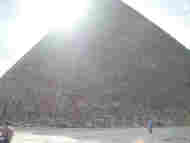 giza/j001.jpg
giza/j001.jpg
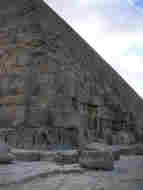 giza/j002.jpg
giza/j002.jpg
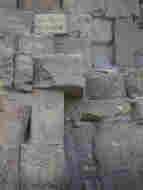 giza/j003.jpg
giza/j003.jpg
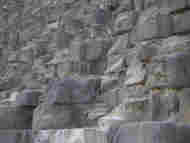 giza/j004.jpg
giza/j004.jpg
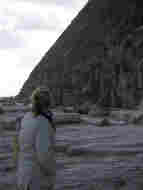 giza/j005.jpg
giza/j005.jpg
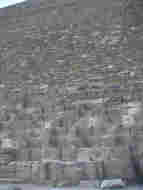 giza/j006.jpg
giza/j006.jpg
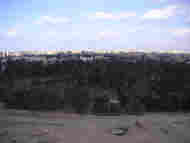 giza/j007.jpg
giza/j007.jpg
 giza/j008.jpg
giza/j008.jpg
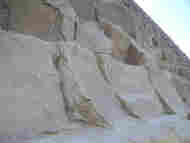 giza/j009.jpg
giza/j009.jpg
 giza/j010.jpg
giza/j010.jpg
 giza/j011.jpg
giza/j011.jpg
 giza/j012.jpg
giza/j012.jpg
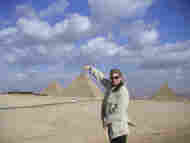 giza/j013.jpg
giza/j013.jpg
 giza/j014.jpg
giza/j014.jpg
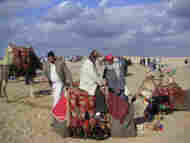 giza/j015.jpg
giza/j015.jpg
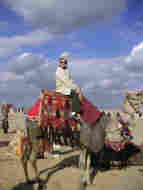 giza/j016.jpg
giza/j016.jpg
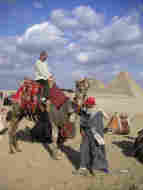 giza/j017.jpg
giza/j017.jpg
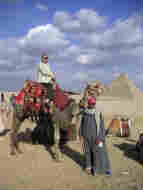 giza/j018.jpg
giza/j018.jpg
 giza/j019.jpg
giza/j019.jpg
 giza/j020.jpg
giza/j020.jpg
 giza/j021.jpg
giza/j021.jpg
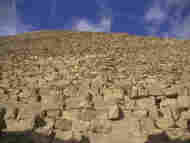 giza/j022.jpg
giza/j022.jpg
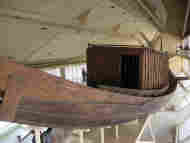 giza/j023.jpg
giza/j023.jpg
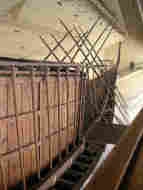 giza/j024.jpg
giza/j024.jpg
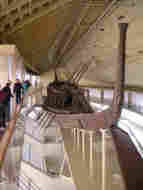 giza/j025.jpg
giza/j025.jpg
 giza/j026.jpg
giza/j026.jpg
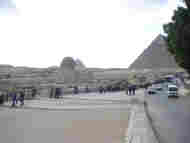 giza/j027.jpg
giza/j027.jpg
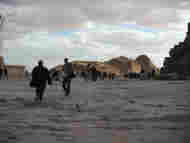 giza/r028.jpg
giza/r028.jpg
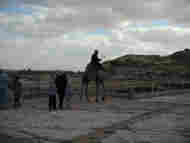 giza/r029.jpg
giza/r029.jpg
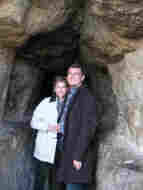 giza/r030.jpg
giza/r030.jpg
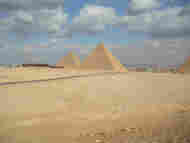 giza/r031.jpg
giza/r031.jpg
 giza/r032.jpg
giza/r032.jpg
 giza/r033.jpg
giza/r033.jpg
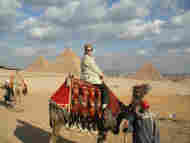 giza/r034.jpg
giza/r034.jpg